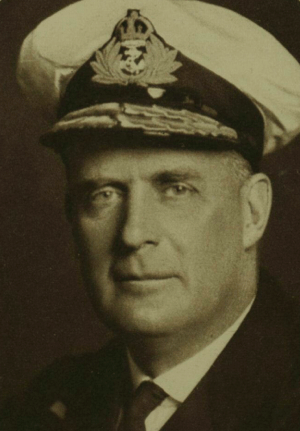Charles Little (Royal Navy officer) facts for kids
Quick facts for kids
Sir Charles Little
|
|
|---|---|

Vice-Admiral Sir Charles Little in 1937, Commander-in-Chief of the China Station
|
|
| Born | 14 June 1882 |
| Died | 20 June 1973 (aged 91) |
| Allegiance | |
| Service/ |
|
| Years of service | 1897–1945 |
| Rank | Admiral |
| Commands held | HMS Fearless HMS Cleopatra HMS Iron Duke China Station |
| Battles/wars | World War I World War II |
| Awards | Knight Grand Cross of the Order of the Bath Knight Grand Cross of the Order of the British Empire |
Admiral Sir Charles James Colebrooke Little GCB GBE (14 June 1882 – 20 June 1973) was a senior Royal Navy officer who went on to be Second Sea Lord and Chief of Naval Personnel.
Little joined the Royal Navy at the training ship Britannia in 1897. He served in World War I and commanded the cruiser HMS Fearless and the Grand Fleet Submarine Flotilla from 1916 to 1918.
After the War he commanded the cruiser HMS Cleopatra in the Baltic Sea and then, in 1920, became Director of the Trade Division at the Admiralty. He was appointed Captain of the Fleet for the Mediterranean Station in 1922 and then became a Senior Staff Officer at the Royal Naval War College in 1924. He became Captain of the battleship HMS Iron Duke in 1926 and Director of the Royal Naval Staff College in 1927. He became Commander of the 2nd Battle Squadron in 1930 and Rear Admiral Submarines in 1931. He was appointed Deputy Chief of the Naval Staff in 1932, promoted vice-admiral on 1 September 1933, and appointed Commander-in-Chief of the China Station in 1936. In 1938 he became Second Sea Lord and Chief of Naval Personnel. In this capacity he was instrumental in establishing the Admiralty Torpedo, Mining and Electrical Training Establishment at Roedean School in Brighton.
He served in World War II becoming Head of British Joint Staff Mission to Washington D. C. in 1941 and Commander-in-Chief, Portsmouth in 1942. He retired in 1945.
He lived at Thakeham in West Sussex.

